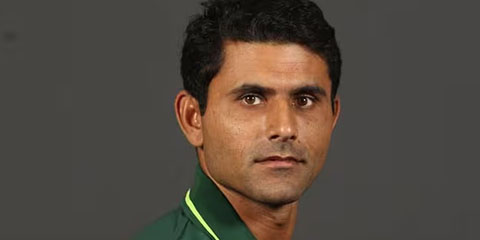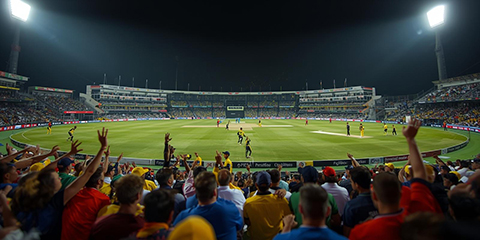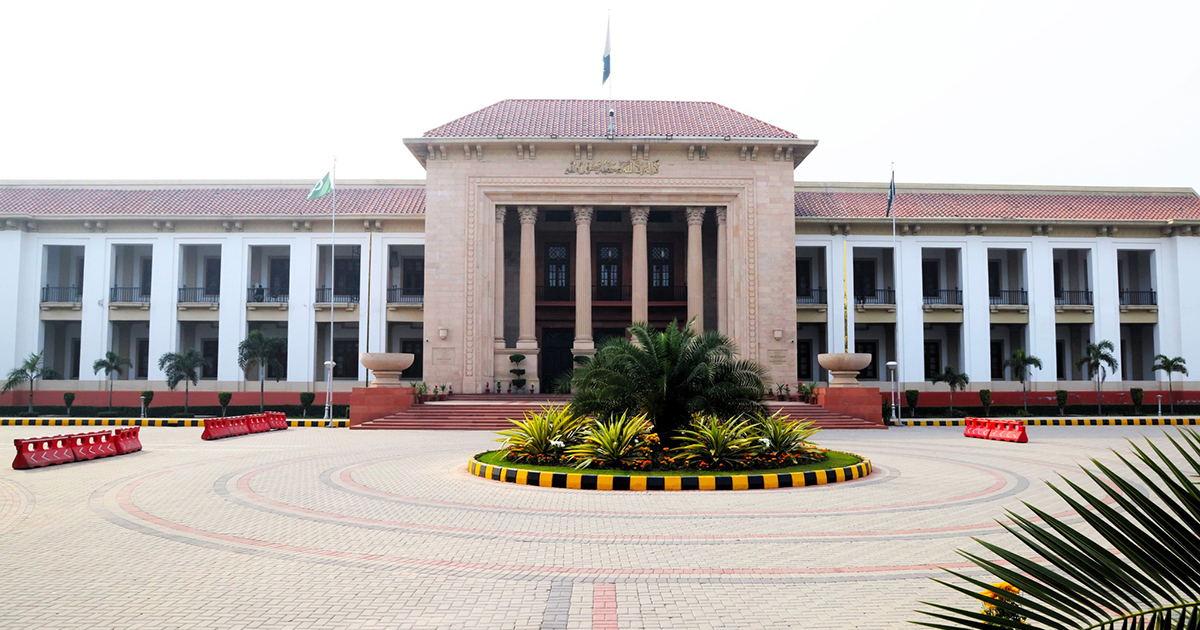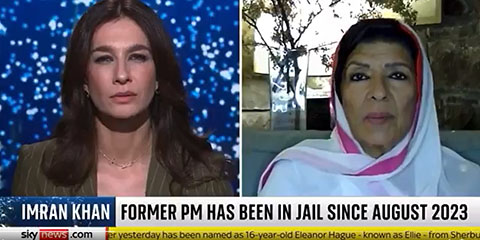PCB's strike force, initiative, impulse, or cosmetics
JournalismPakistan.com | Published last year | Dr. Nauman Niaz (TI)
Join our WhatsApp channel
ISLAMABAD-The Pakistan Cricket Board has uncovered a bold initiative, equally impudent and boldfaced, an initiative introducing a 'Strike Force', an assembly of 50 players, ostensibly chosen on merit from all over Pakistan, who will be nurtured and refined into power-hitters capable of reshaping the landscape of modern T20 cricket. These players, molded into exponents of towering sixes and searing boundaries, will embody the aggression and audacity that define the contemporary game.
A Lofty Goal Amid Ambiguity
To scour the breadth of the nation in search of talent, yet the precise criteria and eligibility remain veiled in mystery. Entrusted with this mission is Abdur Razzaq, the exceptional former Pakistan all-rounder and captain. Over six months, Razzaq will undertake the formidable task of selecting, training, and sharpening their skills, to shape cricketers ready to compete on the international stage within one year. This endeavor unrolls in anticipation of the ICC T20 World Cup, set to be jointly hosted by India and Sri Lanka in 2026.
The conception of such an initiative is, undoubtedly, stirring, an endeavor that excites the imagination and beckons optimism. Yet, one is compelled to temper enthusiasm with caution, earnestly hoping that the PCB Chairman, Mohsin Naqvi, will ensure the project is endowed with the requisite resources, the required tools, information, evidence-based research and supported by skilled, state-of-the-art competent professionals with all the required experience and academic support. Only with such a foundation can this vision excel in the realm of aspiration and become a meaningful contribution to Pakistan's cricketing future.
At present, Pakistan cricket finds itself lamentably estranged from the cutting edge of modern T20 cricket. It lacks not only the professionals but also the requisite tools, technologies, and, perhaps most critically, the competence or collective will to encompass science-based innovations that could elevate the quality of its cricketing output. A pervasive culture of mediocrity lingers like an unwelcome spectre, compounded by an insidious undercurrent of insecurity and an obstinate resistance to change.
Breaking the Cycle: Overcoming Bureaucratic Hurdles
The question arises: Will the labyrinthine bureaucracy of cricket in Pakistan countenance such a seismic shift? Who shall steward these transformative endeavors? The challenge is not just one of vision but of execution, and therein lies the dilemma. For far too long, we have observed the same handful of erstwhile Pakistan stars occupying positions of influence, whether in the selection, mentoring, or coaching, recycled endlessly, their prominence often rooted more in favouritism than merit. Meanwhile, others of genuine expertise and insight, whose contributions could enrich the system immeasurably, remain consigned to the wilderness, their voices stifled by the very structure that should seek to amplify them.
Such is the ethos and culture that pervades the Pakistan Cricket Board, a milieu where potential is too often squandered, and the exigencies of progress are overshadowed by entrenched paradigms. Until this cycle of insularity and complacency is broken, one fears that the promise of innovation and the quest of excellence will remain distant aspirations, rather than tangible realities. The path forward demands courage, wisdom, and a steadfast commitment to reshaping the foundations of the game, a pursuit as philosophical as it is practical, calling for the resolve to outdo the confines of the past and hold the limitless possibilities of the future. Some of the ex-stars, heroes of their time but ostensibly irrelevant to what they could offer in different roles are holding Pakistan cricket hostage, primarily for the titles, statuses, and financial attraction. That's the sad reality. Only a handful of ex-cricketers are seen working as coaches, selectors, mentors even handpicked for supra-specialized jobs, in this case, developing power-hitters in the country.
The Razzaq Paradox: Can Nostalgia Alone Shape the Future of Power Hitting?
As for Abdur Razzaq, he was never merely a power-hitter; his artistry was something far more profound. A ferocious all-rounder, Razzaq possessed an uncanny ability to improvise under pressure, clearing his leg with unflinching confidence and orchestrating victories with individual brilliance. He stood as one of Pakistan's finest all-rounders, arguably the last great torchbearer of a legacy filled with flair, resilience, and unerring instinct. The choice of Razzaq to helm this venture evokes both nostalgia and expectation, for in his exploits lies the essence of what this 'Strike Force' might one day aspire to achieve: the audacity to turn the flow, the poise to inspire, and the power to triumph.
It is, at the very least, a curious turn of events, Abdur Razzaq, once a national selector and coach, now tasked with the production of power hitters. In a world where modern cricket thrives on specialization, where those who hold such positions are often chosen for their well-established expertise and impeccable resumes, how can such a development be considered acceptable? It is a world in which the supra-specialist, the one who has honed his skills and expertise, commands the respect of their contemporaries. The very concept that a man of Razzaq's background should transition into such a role, without the requisite qualifications, experience, hands on work with certain sample sizes at all tiers and of the multi-disciplinary methods now required, seems out of place.
Take, for instance, David Miller, a batsman whose defence is impeccable, but who also possesses an innovative approach to the game. Miller's power-hitting is not just the result of brute strength; it is an art honed through the blending of disparate influences. His ability to execute a T-shot, a stroke seemingly borrowed from the realm of golf combined with the solid, grounded base of baseball, illustrates the intersection of multiple disciplines in the pursuit of cricketing excellence. This is not a case of only force; it is a product of skill, adaptability, and a deep understanding of the body's mechanics. Miller's power is born not only of physical strength, but also of an elegant synthesis between technique and athleticism, in which the striking of the ball and the mastery of its trajectory become an expression of a finely tuned craft. His core is extremely strong. This is the new paradigm, a world in which power hitters are shaped not only by cricketing traditions but by a broader, more eclectic set of influences.
Power-Hitting Redefined: Lessons from the Precision and Adaptability of David Miller
In this context, one must ask: How can the task of developing power hitters, a role requiring such finely-calibrated expertise, fall into the hands of someone who has not navigated the same multi-sport landscape of technique and training? How, indeed, can such a shift be reconciled with the high standards now set by those who integrate such diverse influences, whose training spans not only cricket, but other sports and fields of scientific inquiry?
David Miller's approach to striking the ball is a study in clean execution, a mastery of pure, unadulterated power that is, to say the least, unrivalled in its clarity. His skill does not rely solely on strength, but on a confluence of precision and athleticism, a seamless integration of body and mind. His forearms, honed to a singular purpose, coupled with a core of iron, form the bedrock upon which his craft rests. Lightning reflexes and impeccable timing are not only the byproducts of talent, but the outcome of rigorous practice and deep-rooted muscle memory. It is from a stable, grounded lower body that Miller derives his power, for it is within the mastery of balance—both static and dynamic—that the true art of power-hitting is born.
In the closing overs of a match, when the pressure mounts and the margin for error narrows, Miller’s ability to dispatch Yorkers and slower balls with unerring precision is a demonstration to this equilibrium. But perhaps what sets him apart as a true slayer of the finest bowling attacks is his unparalleled capacity to exploit angles—his ability to adapt his strokes to the field’s demands, responding to its ever-changing nature with almost instinctive clarity.
However, it is his signature T-Shot, a stroke both inventive and forceful, that reveals the essence of his technique. In a bold, unorthodox move, Miller steps deep into his crease, positioning himself to loft the ball over long-on, straight, or mid-wicket. The 'T' refers not just to the shot’s trajectory, but to the precise alignment of his body and bat, a perfect fusion of posture and intention. It is a stroke that outdoes pure power-hitting; it is an expression of thought and execution harmonized.
Yet, it must be said that the art of power-hitting demands more than just raw force; it requires a solid foundation, a defence as powerful as the attack. In this respect, Miller’s technique is flawless. His adaptability, his tactical awareness, these elements form the bedrock upon which his remarkable ability to read the game and adjust accordingly is built. For in cricket, as in life, the strength to strike decisively comes not merely from the capacity to attack, but from the wisdom to defend when required. His extension of arm is something that is extraordinary and needs to be replicated by those who intend resorting to power-hitting.
Heinrich Klaasen: A Masterclass in Power-Hitting and Tactical Brilliance
Heinrich Klaasen, a player of remarkable poise, constructs his innings upon a foundation of stability and precision. His base, grounded and unwavering, serves as the basis upon which his cricketing prowess is built. The swiftness of his hands, coupled with the perfect lever formed by his extended arms, ensures that every shot he plays is an embodiment of both technique and intention. His bottom hand, strong and integral, plays a crucial role in transferring the energy necessary to power the ball. Each movement is a reflection of the ideal integration of footwork and weight transfer, executed with remarkable fluidity and grace.
It is in the art of power-hitting that Klaasen’s true mastery becomes apparent. His bat swing, free-flowing and unrestrained, is not the result of raw force, but the consequence of a well-honed technique and a core as strong as it is supple. In this seamless fusion of strength and finesse, he is able to strike the ball over great distances with an economy of effort, an effortless power that excels brute force.
Equally impressive is Klaasen’s adaptability against spin, an authentication to his keen understanding of cricket. His ability to adjust his play in response to changing circumstances, his back-foot play, coupled with his impeccable execution of horizontal bat shots affords him a wealth of scoring opportunities. But it is not only his ability to score that sets him apart; it is his exceptional skill in rotating the strike with precision, ensuring the game remains under his control, that marks him as a player of rare tactical acumen.
Thus, Klaasen’s cricketing brilliance is not the result of isolated feats of strength or precision, but rather the harmonious confluence of all elements, technique, adaptability, and foresight that makes him a player capable of lasting not just in the moment, but across the evolving landscape of cricket.
Kieron Pollard: Redefining the Art of Power-Hitting
Keiron Pollard, a quintessence of power-hitting, epitomized the synthesis of technique and physicality. His stance, wide and resolute, provided the stability necessary to generate formidable force from the very depths of his lower body. In this solid foundation, he retrieved not only balance but the key to unlocking his prodigious power. His back lift and downswing, executed with precision, facilitated an extraordinary bat speed that allowed the bat to descend in a straight arc, striking the ball with immaculate contact and unerring force.
Pollard’s approach was marked by minimal foot movement, relying instead on the dominance of his bottom hand, which controlled the power and direction of his shots. His physical strength, formidable and uncompromising was complemented by a core that acted as both anchor and engine, propelling his weight forward to complete the full elevation of his shots. This core strength, in conjunction with his impeccable hitting arc, afforded him the flexibility to adapt to a variety of situations, making him a master of the game’s many nuances.
Moreover, Pollard was no mere executor of pre-existing shots; he was a true innovator. His repertoire, which included the scoop, the ramp, straight lofted drives, and horizontal bat shots, pushed the limits of what was considered possible in modern-day cricket. These innovations, born of both instinct and intellect, elevated him to the very forefront of the game’s power-hitters, the trendsetter.
Yet, perhaps the most remarkable facet of Pollard’s career lay in his unwavering commitment to fitness and strength conditioning. His physical preparation was unparalleled, ensuring that his body was as finely tuned as the bat he plied. In this, Pollard was not just a player of raw power; he was a consummate artisan, whose mastery of both body and bat enabled him to redefine the art of power-hitting in the modern era.
Jos Buttler: The Natural Master of Modern Power-Hitting
Jos Buttler, much like the legendary AB de Villiers, personified the rare quality of being a natural, a player whose mastery seems almost innate, as though etched into his very being. Buttler’s stance is a study in equilibrium, relaxed and slightly open, poised to strike yet ready to adapt at a moment’s notice. This approach grants him a perfect balance, a platform for mastery rather than mere execution. His grip, firm yet flexible, provides both control and freedom. With the bat held high and an elevated back lift, his ability to bring it down with decisive force stands as one of his greatest assets. In Buttler, one finds an exemplar of shot selection and timing, those twin virtues that define batting excellence.
The mechanics of his power-hitting are a symphony of elements seamlessly integrated. Dominance of the bottom hand channels controlled aggression, while a strong core and a stable lower body provide the structural foundation necessary for power. His supple wrists lend him the ability to craft an extraordinary range of strokes, each delivered with precision and finesse. Yet, what elevates his game further is his unrelenting physical fitness, coupled with a bat speed that matches his mental acuity, his premeditation often outwitting the need for reactive play. It is this harmonious interplay of physical prowess and cerebral clarity that places Buttler among cricket’s modern greats.
The Art of Adaptability: Beyond Brute Force in Power-Hitting
Yet, as we contemplate the art of cultivating power-hitters, one cannot overlook the profundity of adaptability in players such as Chris Gayle, Virender Sehwag, and Rishabh Pant. Gayle and Sehwag, both architects of two Test triple centuries each, showcased an ability to traverse formats with unparalleled skill. Rishabh Pant, with his triple hundred in first-class cricket, exemplifies a similar ethos, transitioning seamlessly across formats, unleashing his hitting prowess when the situation demands.
Then there is Suriyakumar Yadav, whose elegance and fluidity make him one of the finest exponents of T20 batting. Yet, his success is not built on brute force alone; it is a diversity of his supple technique and mental acuity. His artistry serves as a reminder that power in cricket is not solely about muscle but also about method, balance, and ingenuity.
Thus, the notion of assembling a 'Strike Force', predicated purely on brute hitting, appears somewhat misplaced. The true essence of a power-hitter lies in a nuanced blend of skill, adaptability, and contextual awareness, a philosophy that outdoes pure force, echoing the broader truth that cricket, at its heart, remains a game of intellect and elegance as much as strength and manifestation.
The cultivation of state-of-the-art power-hitters in cricket demands a symphonic blend of tradition and modernity, where time-honoured coaching methods harmonise with the avant-garde realms of technology, data analytics, and sports science. It is not merely the teaching of brute force but the careful orchestration of technique, precision, and innovation that transforms a batsman into a master of power.
Central to this endeavour is the deployment of biomechanical analysis, a scientific lens through which the intricacies of batting stance, swing, and follow-through are scrutinised and optimised for the maximal generation of power. This intricate process finds its foundation in cutting-edge tools, such as high-speed cameras and motion-capture technology, which dissect body alignment during shots. They offer unparalleled insights into the coordination of hand and eye, the fluid movements of the wrists, and the rotation of hips and shoulders that form the kinetic chain of power transfer.
Yet, the physical preparation of such a batsman is no less pivotal. The strength and conditioning regimen must be meticulous, encompassing an understanding of explosive strength and core stability. This is achieved through targeted exercises involving resistance bands, sled pulls, and plyometric boxes, each designed to simulate the specific demands of power-hitting. Such routines not only build raw strength but also refine the muscle memory and explosive capabilities that distinguish the extraordinary from the ordinary.
The Philosophical Quest: Crafting the Modern Power-Hitter in Cricket
Thus, creating power-hitters in the modern game is not a mere mechanical exercise but a philosophical quest, a demonstration of the convergence of art and science, rooted in tradition yet reaching ever forward to innovation. In this fusion lies the essence of cricket’s continual evolution.
The art of crafting a consummate power-hitter in cricket necessitates a holistic multidiscipline approach, one that excels the physical prowess to huddle the nuanced interplay of skill, strategy, and intellect. The mastery of boundary-hitting zones, coupled with the ability to adapt seamlessly to both spin and pace, forms the cornerstone of this endeavour. Yet, the subtleties of power-hitting demand an even deeper exploration into angles of stroke play and the psychology of the batter under pressure.
At the heart of this transformation lies the indispensable role of data analytics and artificial intelligence. Shot-mapping technologies, in concert with pitch behaviour analysis, illuminate patterns and opportunities that might otherwise elude the human eye. Wearable technology provides another layer of precision, monitoring muscle activation and fatigue to tailor training regimens for optimal intensity and efficiency.
Equally vital are the technical adjustments, refinements in stance to ensure stability, the cultivation of bottom-hand dominance for decisive power, and the calibration of back lift and swing path for precision. These elements must then be harmonised with contextual and situational awareness, allowing the batter to respond with intelligence and adaptability to the demands of the game.
The integration of biomechanical and physiological analysis lends scientific rigour to the quest, unearthing the optimal movements and positions for generating force. Meanwhile, nutrition becomes an unseen ally, fuelling the body with the requisite energy and resilience to sustain peak performance.
In this opus of innovation and tradition, the modern power-hitter is forged, an authentication of sport’s evolution and its capacity to adopt complexity while honouring the spirit of simplicity. It is a philosophical undertaking, a reminder that the quest of excellence in cricket is as much about the mind and soul as it is about the bat and ball.
The artistry of power-hitting in cricket is often underpinned by subtle refinements, where even the smallest adjustments resonate profoundly. Consider, for instance, the alignment of the hands, where the ‘V’s formed by one’s thumbs and forefingers are tilted to align with the segment of the bat between its spine and edge. This nuanced shift grants greater leverage when executing cuts or pulls, while subtly altering the bat’s face angle to generate power and precision.
Specialised training becomes the receptacle in which such skills are fashioned. Practising with heavier bats and weighted balls not only builds muscle memory but also augments strength and control. A stance with a pronounced back lift, accompanied by an expansive backswing and elongated downswing, forms the foundation for generating extraordinary force. The core and forearms, as strongholds of power, must be meticulously strengthened to sustain this intensity.
Historical exemplars such as AB de Villiers and Yuvraj Singh, celebrated for their unrivalled bat speed, remind us of the criticality of this metric. Meanwhile, Chris Gayle, employing a heavier bat to compensate for slightly reduced speed, exemplifies an alternative approach where physical strength compensates for other dynamics. Consequently, the measurement of bat speed emerges as an integral tool in understanding and enhancing a batter’s capacity for power-hitting.
The philosophy extends to modern methodologies, such as overload and underload training, which cultivate both strength and speed, ensuring that the hitter evolves in both dimensions. Achieving equilibrium between the dominance of the bottom and top hands further refines the batter’s technique, ensuring a seamless synergy that translates into effective execution.
It emphasises that a true power-hitter is not merely a player of brute force but a practitioner of elevated skill, one who commands a higher-than-average aptitude in both technique and adaptability. In the realm of cricket, power-hitting outdoes mere mechanics; it is an intricate combination of precision, physicality, and an uncompromising commitment to excellence.
A Call for Long-Term Vision and Scientific Approach
One earnestly hopes that the PCB’s recent initiative to establish a so-called Strike Force does not devolve into a superficial endeavour or a farce, serving only as a pretext to reintegrate Abdur Razzaq, recently relieved of his duties as selector in the wake of Pakistan’s misadventure at the ICC T20 World Cup 2024 in the USA and West Indies. Such a turn of events would be disheartening indeed.
To reclaim relevance in the modern game, cricket’s custodians must adopt a path manifest by integrity in selection and a resolute commitment to the implementation of science-driven models. Pragmatism must be the lodestar, guiding the confluence of tradition and innovation. Anything less would betray the very spirit of progress that cricket so earnestly demands in this era of unrelenting evolution. And start all this in tier cricket and build the stock, graduating from U 13s to U 16s to U 19s to Pakistan ‘A’ or Shaheens and eventually representing Pakistan in international cricket and producing results. It wouldn’t be done in six months, not even in a year. One needs to first develop a culture and then have infrastructure to have well-integrated development programs.
Photo: Getty Images
Dr. Nauman Niaz is a civil award winner (Tamagha-i-Imtiaz) in Sports Broadcasting and Journalism and a regular cricket correspondent, having covered 54 tours and three ICC World Cups. He has written over 3,500 articles, authored 14 books, and is the official historian of Pakistan cricket (Fluctuating Fortunes IV Volumes—2005). His signature show, Game On Hai, has received the highest ratings and acclaim.

























